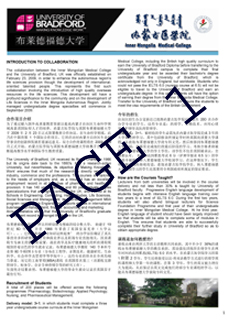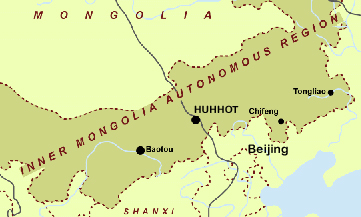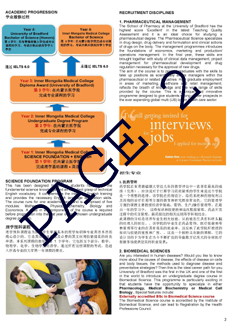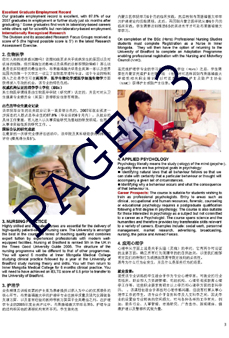 |
 |
BACKGROUND
The Autonomous Region of Inner Mongolia was set up on the
1st of May, 1947 it is the first autonomous region of minority
nationalities in China. It has an area of over 1.183 million
square kilometers (about 1/8 of total China area) and a
population of 23.86 million (2006), comprising multiple
ethnic groups with 3.77 million Mongolians, 17.6 million
Hans and over 900,000 people of other ethnic minority groups
(Daur, Ewenki, Oroqen, Hui, Manchu, Korean and other nationalities).
The
Inner Mongolia Autonomous Region is also called Inner Mongolia
for short, with Hohhot as its capital city. Its origin can
be traced back to the Ordos people who lived there 2,000
years ago.
Inner Mongolia has not only a large area but
also geographical advantages, bordering Heilongjiang , Liaoning
, Jilin , Hebei , Shanxi , Shaanxi , and Gansu provinces
as well as Ningxia Hui Autonomous Region in the east, south
and west. It spans the northeast, north and northwest of
China and borders Russia and Mongolia in the north |
|

Its
main industries include agriculture and forestry, stock breeding,
coal mining and steel industries. Inner Mongolia abounds
in natural resources especially mineral resources, and its
reserves of rare earth and natural alkali rank first in
China. Inner Mongolia is a special economic zone renowned
as "treasure basin". The
Greater Hinggan Mountain, renowned as |
| |
 |
|
with
a boundary line as long as 4,221 kilometers, thus becoming
am important frontier for China’s opening to the outside
world.
PROJECT
Working
within the guidelines of government regulatory organizations,
our mission is primarily to create premium academic opportunities
for all students by reducing economic or geographical barriers
to higher education. We are conservative in adhering to
"old-school" style education although we recognize
the value added aspects of E-based education. APB is not
a student recruitment organization and we are not directing
institute co-operations that focus entirely on the transfer
of students from one institution to another.
We
promote industry relevant international academic developments,
that are generally affordable and without compromising the
quality of education. In this way students can be eligible
to qualify for degree awards from both the local and overseas
collaborating universities. In this system, we facilitate
intellectual and technology transfer and strategize all
aspects of the operation. |
|
the green treasure,
is the largest and well-preserved primitive forest and also
the Kingdom of Wildlife , with over 300 species ofbirds
and 100 species of animals, 40 of which are listed among
the national rare species.
Some
places of interest include Zhaojun Tomb in Hohhot , the
Five-towers Temple , the Wudangzhao Monastery, and the Genghis
Khan Mausoleum in Yijinhuoluo. The traditional special local
products include pure wool coarse string, Alashan camel's
hair, Xilin Gol mushroom and Hetao melon. |
| |
 |
|
Considerable
time is invested translating and examining the syllabuses
from participating institutions, their assessment strategies
and quality assurance processes, before mapping the course
structure to derive the most preferred learning outcome
and that draws the strengths of the participating educational
institutions. In devising the academic structures and operations
we are mindful of the financial aspects and to date we have
100/100 success in both the academic operation and the financial
outcomes.
Consequently,
in Dec 2008, APB and the Inner Mongolia Medical College
(IMMC) agreed to collaborate in developing and implementing
international recognized biomedical science degree programmes
at its campus in Huhhot. The project represented a major
opportunity for key senior administrators at IMMC and APB
to improve the academic opportunities and enrich the learning
outcomes of the local and overseas students. Responding
to our global communication
for international academic collaboration(s), the University
of Bradford, UK delegation arrived in Huhhot in February
2009 for a 10 day intensive planning session, |
|
|
| |
|
Left
to Right: Prof.
David Coates OBE (Dean, School of Life Sciences, UOB), Prof.
Ou-Yang Xiao Hu (President, IMMU, Deputy Chairman of Inner Mongolia), Prof. Nigel Lindsey (Dean for Learning and Teaching, School of Life Sciences
UOB), Prof. Yi He (Vice-President, IMMU),
Dr. John Tholen (President and CEO, INSCI) |
|
|
